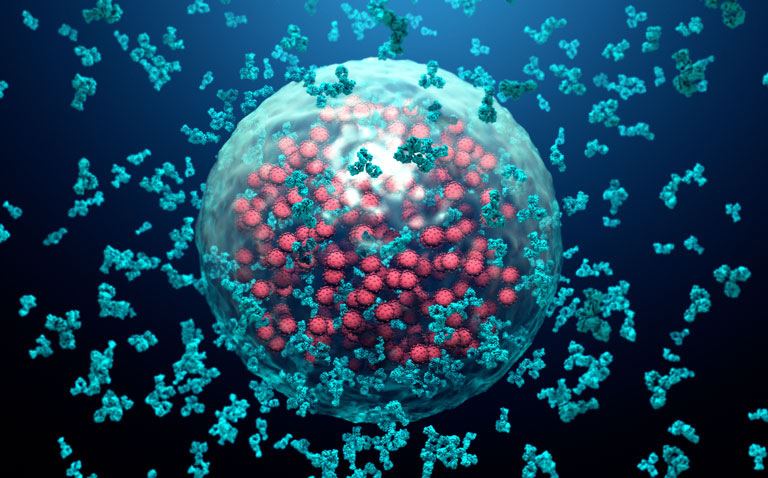Animal data on the use of neutralising antibodies against COVID-19 have shown promise with positive results from, for example, REGN-COV2.
Now in an interim analysis of a Phase II trial, a team from the Department of Medicine, Women’s Guild Lung Institute, California, have found that a new and potent, antispike neutralising antibody, LY-CoV555, which has been developed by Eli Lilly and which is derived from convalescent plasma, appears to reduce hospitalisations for those with COVID-19. This was a randomised, double-blind, single-dose trial conducted at 41 centres in the US among patients who tested positive for COVID-19 and presented with mild or moderate symptoms. All received a single intravenous infusion of LY-CoV555 at doses of 700mg, 2800mg and 7000mg or placebo for approximately 1 hour, within 3 days after a positive COVID-19 test. Although patients could receive additional treatments, the current publication only reports on the results for LY-CoV555. The study’s primary outcome was the change in COVID-19 viral load which was measured using the PCR test, from baseline to day 11 (± 4 days) after a positive result and data on viral-related symptoms were collected up to 29 days. Secondary outcomes collected related to safety assessments and symptom burden as reported via a questionnaire and clinical outcomes, which included admission to hospital, a visit to the emergency department of death.
Although a Phase II study, the authors concluded that LY-CoV555 appears to be both safe and effective.
Findings
A total of 452 patients with a median age of 45 years (55.3% female) and including 10.7%, were randomised to either placebo or one of 3 doses of LY-CoV555. Overall, 75.1% had mild disease and the mean viral load (based on the Ct value) was 23.9. By day 11, the mean decrease in viral load across all patients was -3.81, which resulted in an elimination of more than 99.97% of viral RNA. The greatest difference in reduction of viral load compared to placebo occurred among patients receiving the 2800mg dose of LY-CoV555 (-0.53) and this group also had a greatest reduction in viral load after 7 days compared to placebo (-0.45). At day 29, the proportion of patients hospitalised due to COVID-19 was 1.6% in the LY-CoV555 group vs 6.3% among the placebo group and this was similar across the three doses. Furthermore, on days 2 to 6, symptom burden was less among those given LY-CoV555 and there were no deaths or safety concerns.
Reference
Chen P et al. SARS-CoV-2 neutralising antibody LY-COV555 in outpatients with COVID-19. N Engl J Med 2020 DOI: 10.1056/NEJMoa2029849










